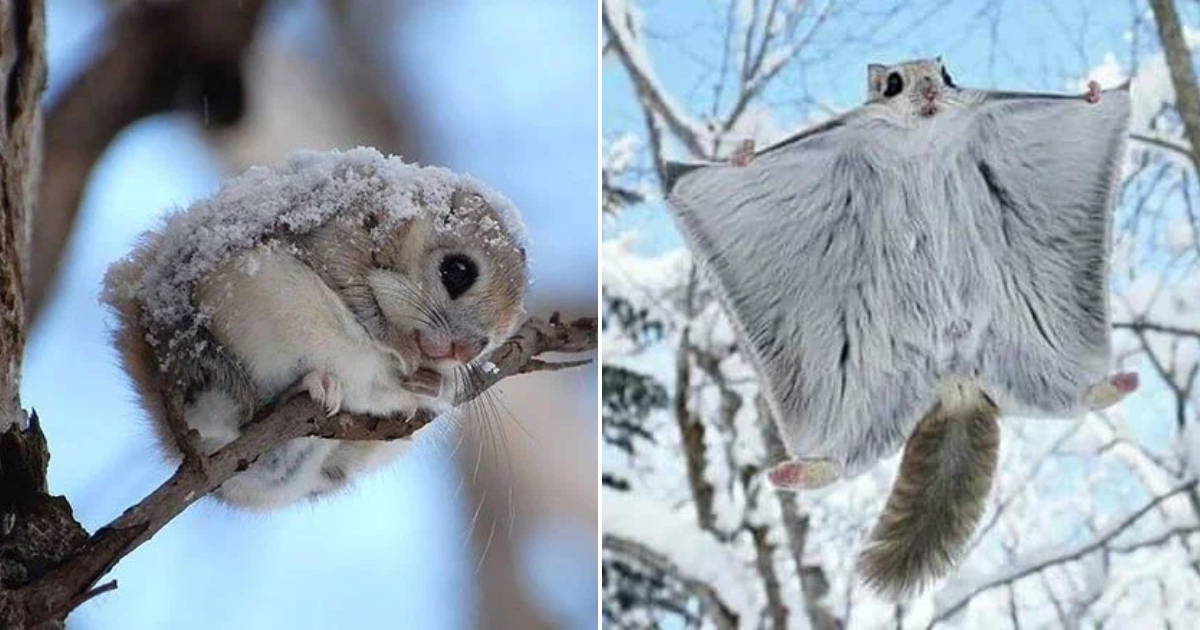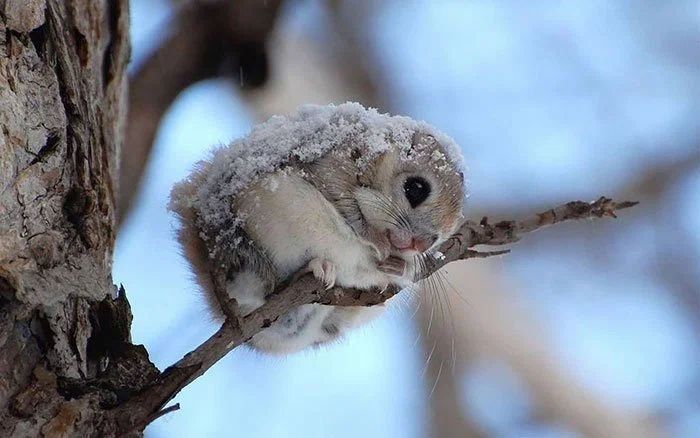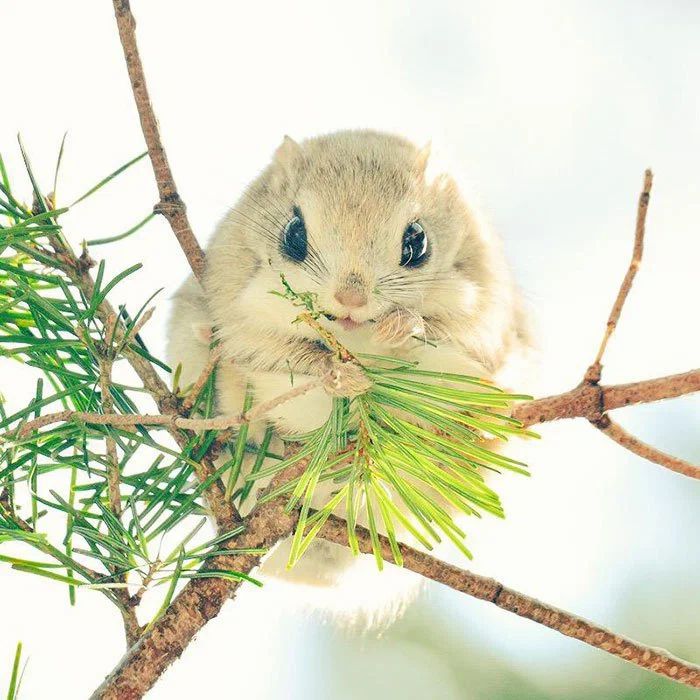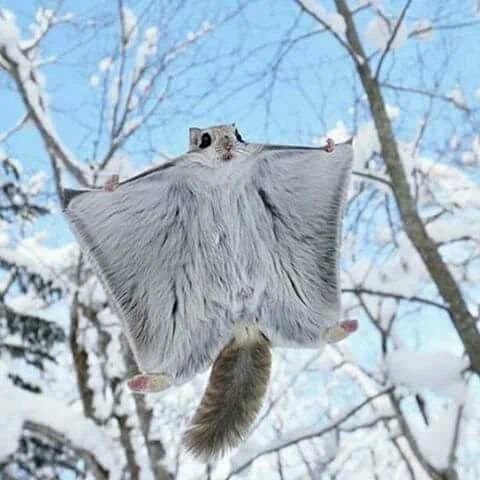The Flying Squirrel: The Cutest Resident of the Taiga

The flying squirrel, also known as the Siberian flying squirrel, is a strong contender for the title of the cutest creature in the harsh Siberian wilderness.
The flying squirrel is slightly smaller than the regular squirrel. Its compact size allows for easier survival in the harsh conditions of the taiga winters. Its warm and fluffy fur, combined with its large eyes, gives the flying squirrel an adorable appearance.

An adult flying squirrel weighs 150 grams, while newborns weigh only 5 grams.
This squirrel has a flight membrane that functions as a parachute when it jumps from tree to tree.
Flying squirrels are social animals and form stable pairs. They are also very friendly creatures that are not afraid of humans and often settle near human dwellings. They are particularly fond of birdhouses.
They feed on buds, pine needles, seeds obtained from cones, and tree bark. In the summer, they gather berries and mushrooms. While they are primarily found in Siberia, they are occasionally spotted in Europe as well, mainly in Latvia, Estonia, and Finland.
The fur of the flying squirrel does not hold much value for humans. On one hand, its fur bears a resemblance to the valuable fur of chinchillas, which humans nearly drove to extinction. However, the flying squirrel’s fur is shorter than that of a chinchilla, and more importantly, it is harder to process. It has a very thin and delicate layer of subcutaneous tissue. In this case, we can only rejoice for the squirrel, as otherwise hunters would have long decimated their population.
In the wild, they live for up to five years. They have many predators, such as owls, martens, and weasels, which eventually pose a threat to these furry creatures. In captivity, however, such squirrels can live up to 13 years.


